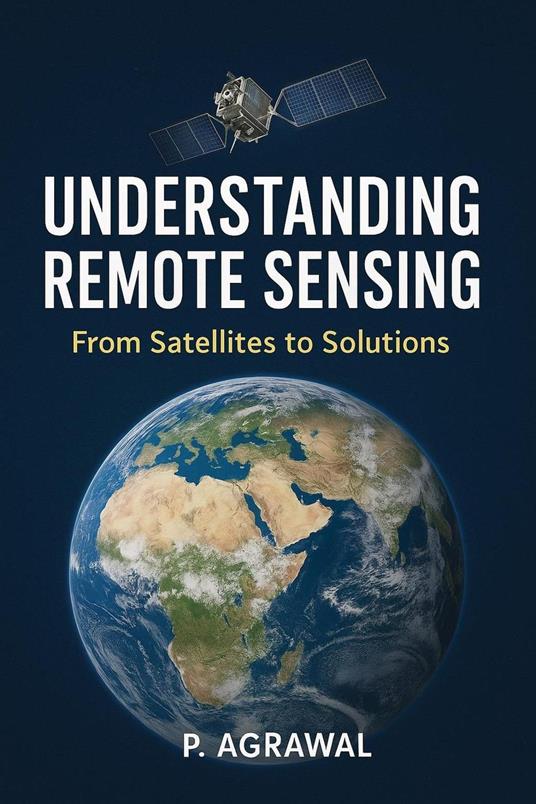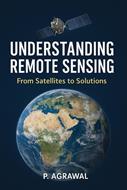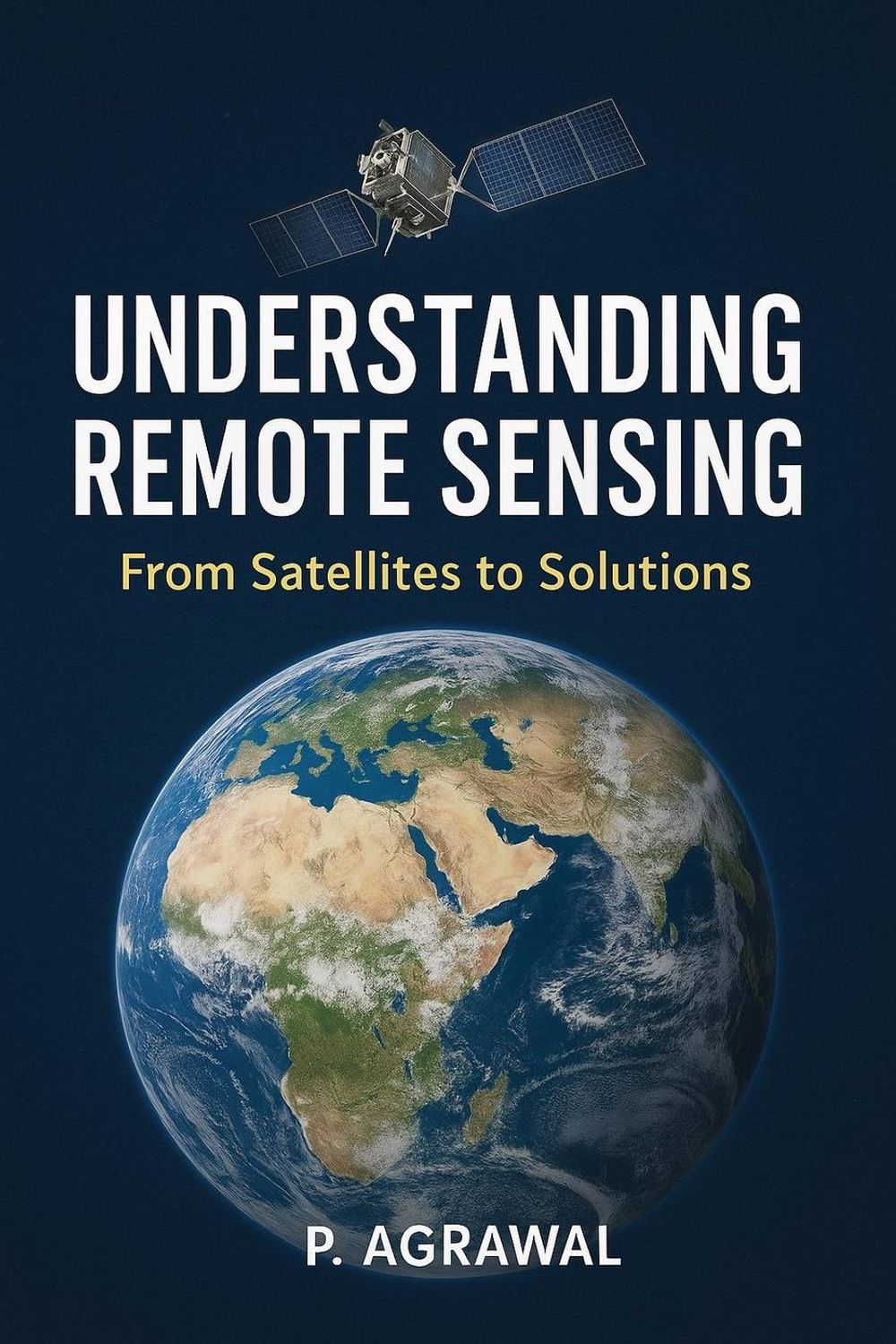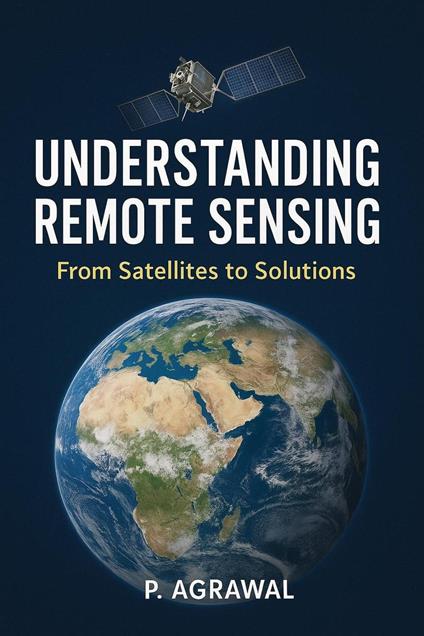Understanding Remote Sensing: From Satellites to Solutions
Understanding Remote Sensing: From Satellites to Solutions is a clear, practice-oriented guide that takes readers from the core physics of Earth observation to the delivery of real, actionable insights for agriculture, water, forests, cities, disasters, climate, security, and more. Written in simple, bookish language, it balances foundational science with hands-on methods and operational workflows so learners can confidently move from images to decisions. The book opens with the essentials: how electromagnetic radiation interacts with the atmosphere and Earth's surface; how passive and active sensors (optical, thermal, radar, LiDAR) work; and how satellite orbits—from sun-synchronous to geostationary—influence coverage, revisit, and applications. It then explains data acquisition end-to-end, from downlink and archiving to analysis-ready products, and shows how radiometric, atmospheric, and geometric corrections turn raw pixels into reliable measurements that align across space and time. With the basics set, readers learn practical image craftsmanship: contrast stretching, histograms, false-color composites, band ratios, principal components, and texture. These lead naturally to modern mapping techniques—unsupervised and supervised classification, object-based image analysis, and machine learning and deep learning—plus time series methods and multi-sensor data fusion that improve accuracy, fill cloud gaps, and reveal change. Applications chapters demonstrate how these tools solve real problems. In agriculture and precision farming, indices, radar wetness, and thermal cues guide variable-rate inputs, irrigation, crop identification, and yield estimation. Forestry chapters cover canopy mapping, biomass modeling, disturbance detection, and conservation planning. Water resources content spans open water, floods and droughts, snow and ice, soil moisture proxies, groundwater subsidence, and water quality signals. Additional chapters address hazards and emergency response, urban mapping and smart cities, geology and soils for exploration and engineering, and climate change monitoring from land surface temperature and phenology to cryosphere and sea level. Looking ahead, the book surveys emerging technologies—hyperspectral sensing, multi-frequency radar, drone and spaceborne LiDAR, small-sat constellations, stratospheric platforms, cloud and edge computing, analysis-ready data cubes, and AI-driven automation—framed by ethics, privacy, interoperability, and the skills needed in tomorrow's workforce. The final chapter turns knowledge into practice with project design blueprints, operational playbooks, validation and uncertainty reporting, governance and privacy guidelines, communication and storytelling, and career pathways across government, industry, NGOs, and academia. By uniting sound principles, proven methods, and responsible implementation, this book equips readers to turn satellites into solutions—delivering timely, trustworthy geospatial intelligence that improves everyday decisions.
-
Autore:
-
Anno edizione:2025
-
Editore:
-
Formato:
-
Lingua:Inglese
Formato:
Gli eBook venduti da Feltrinelli.it sono in formato ePub e possono essere protetti da Adobe DRM. In caso di download di un file protetto da DRM si otterrà un file in formato .acs, (Adobe Content Server Message), che dovrà essere aperto tramite Adobe Digital Editions e autorizzato tramite un account Adobe, prima di poter essere letto su pc o trasferito su dispositivi compatibili.
Cloud:
Gli eBook venduti da Feltrinelli.it sono sincronizzati automaticamente su tutti i client di lettura Kobo successivamente all’acquisto. Grazie al Cloud Kobo i progressi di lettura, le note, le evidenziazioni vengono salvati e sincronizzati automaticamente su tutti i dispositivi e le APP di lettura Kobo utilizzati per la lettura.
Clicca qui per sapere come scaricare gli ebook utilizzando un pc con sistema operativo Windows



